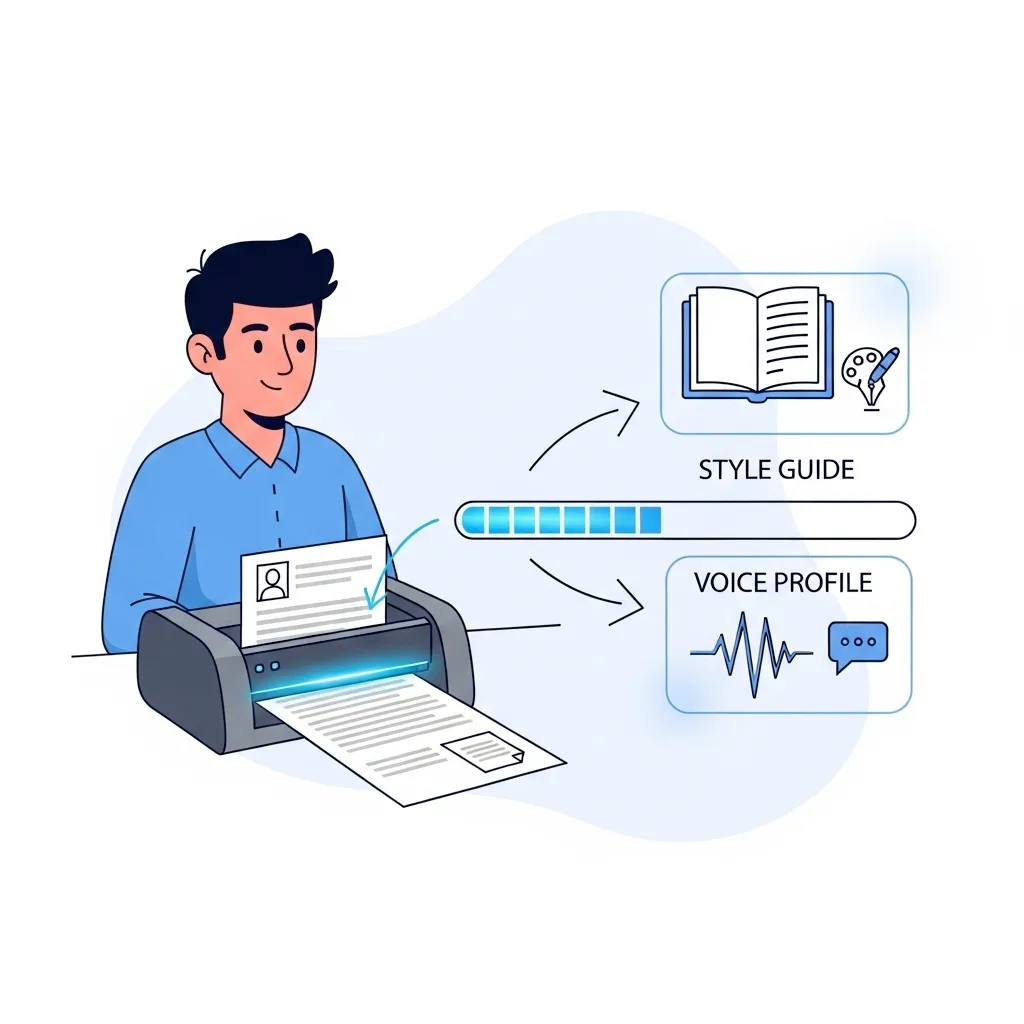How to Build Your Own AI Agent Without a New Subscription
Learn to build a powerful AI agent using the tools you already have. This guide shares a simple 6-step workflow to create custom AI agents that writes as you do

Everyone's talking about AI agents. They promise a future where autonomous digital assistants manage our tasks, write our code, and even run our businesses. But if you've looked into it, you've probably noticed the conversation quickly turns to subscribing to yet another new, complex, and often expensive AI tool.
I was curious about the hype, but the last thing I wanted was another monthly subscription. I wanted to see if I could achieve the same powerful results using the AI tools I already pay for, such as Claude or Gemini or ChatGPT.
The question was simple: could I build my own "agent" without writing a single line of code or paying for a new platform?
The answer, it turns out, is yes. And the secret isn't in a tool, but in a process.
The Flaw in the "Single Prompt" Mindset
My initial experiments were frustrating. I found myself in long, meandering conversations with the AI, constantly nudging it in the right direction. While it sometimes worked, the process was manual, inconsistent, and my prompts changed every time. It wasn't a system; it was a struggle to get the specific, actionable output I needed.
The real insight came from an unexpected place: GitHub. I started observing how developers were building projects to improve AI-generated code. They weren't using single, magical prompts. They were building structured, multi-step workflows—a technique often called "prompt chaining."
This isn't just a niche trick; it's a fundamental shift in how we interact with AI. As experts from IBM have noted, the real power of AI is unlocked when we move beyond simple Q&A and start designing systems where AI can execute complex, multi-step tasks. Simply put, an "agent" isn't a piece of software.
It's a well-designed workflow.

My 6-Step Agentic Workflow for Writing
With this new perspective, I set out to build my own agentic system focused on improving how I write content. My goal was to create a repeatable process that could take an idea and turn it into a polished draft in my own voice. After a week of trials, I landed on a 6-step process that I could use as a single System Prompt in any AI chatbot.
I think of it as managing a small team of AI specialists, each with a distinct role.
Step 1: The Style Analyzer - _Teaching the AI to Sound Like You
Before any writing begins, the first specialist analyzes samples of my past writing. Its only job is to understand my voice, tone, sentence structure, and vocabulary. It creates a "style guide" that becomes the foundation for everything that follows.

Step 2: The Strategist - Defining Your North Star
Next, I brief the Strategist. This specialist defines the goal for the new piece of content. Who is the audience? What is the core message? What should the reader do after reading? It gathers all the necessary context before a single word of the new article is written.
Step 3: The Outliner - Architecting a Coherent Structure
With a clear strategy, the Outliner takes over. Its job is to create a logical and compelling structure for the post. It breaks the topic down into key sections and plans the narrative flow, preventing the AI from rambling.
Step 4: The Creator - Generating the Heavy-Lifting Draft
This is the specialist that does the actual writing. Using the style guide and the outline, the Creator generates the first full draft. Because it has such clear instructions, the output is far more relevant and structured than a single prompt could ever produce.
Step 5: The Critic - Your Unbiased Quality Control
No first draft is perfect. The Critic acts as an internal quality control check. It reviews the draft against a specific checklist: Is the tone right? Is the core message clear? It identifies weaknesses and areas for improvement.
Step 6: The Polisher - Collaborating on the Final Edit
Finally, the Polisher takes the feedback from the Critic, along with my own manual edits and suggestions, to create the final, refined draft. This is a collaborative step where my human insight and the AI's tireless ability to rewrite come together.
The 80/20 Rule of AI-Assisted Writing
To be clear, the final draft from this process doesn't sound exactly like me. And that's by design. The goal isn't to completely replace my role in the creative process. I keep refining the output, tweaking sentences, and adding personal anecdotes until I’m satisfied.
This workflow was designed to get me 80% of the way there, fast.
It automates the most time-consuming parts of writing—the blank page anxiety, the initial structuring, the laborious first draft. This frees me up to focus my energy on the final 20% of high-value polish, strategic thinking, and personal touches that make the content truly mine.
You Can Build Your Own AI Agent, Too
This is still a work in progress, but it has fundamentally changed how I approach content creation. It has saved me hours of work and, more importantly, has resulted in better, more consistent writing.
I'm sharing the full workflow prompt I developed because I believe this approach can help others demystify the hype around AI agents. You can take it, adapt it, and build your own personal workflows for any complex task, from writing and coding to planning and analysis.
I'm looking for feedback on how it works for you and what could be improved. You can even give this a try in Notion, where I've built this out as a template: VoiceCraft - Where AI Finally Sounds Like You.